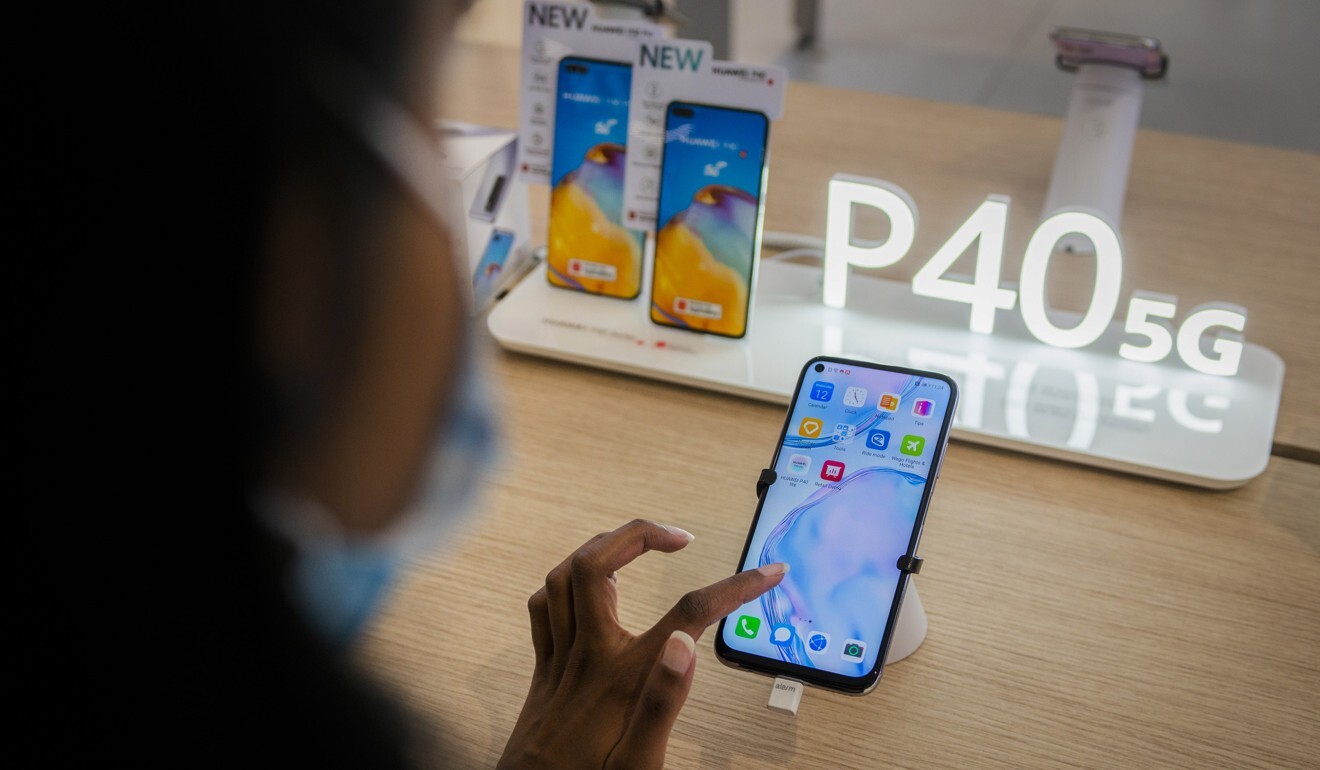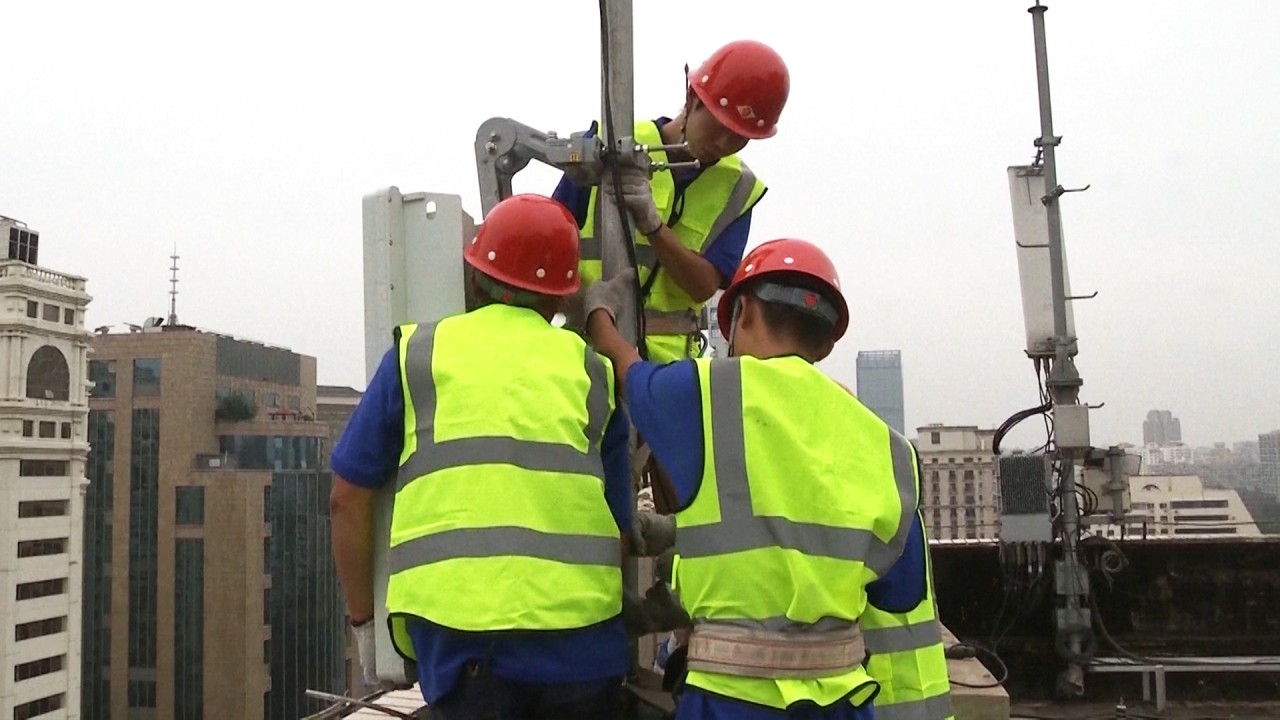
5G has been heralded as a tech game changer but consumers in China are underwhelmed by spotty coverage and hard sell
- This is the second in a two-part series, which looks at how China’s millions of mobile consumers have yet to take to 5G, with reality not living up to the hype
- Mobile operators are facing blowback from consumers on 5G, unsatisfied with network coverage, expensive handsets and hard sell tactics
As a busy Beijing-based banker, Kelvin Li relies heavily on his smartphone for messaging, email, and video calls during his frequent business trips, but he finds that reception can be spotty on his travels.
So when he heard about the promise of 5G networks, with their higher capacity and increased data speeds, he was keen to sign on the dotted line with an eager sales person.
“I heard from my carrier that 5G would provide reliable and fast data speeds, and that is important to me,” said Li. “I upgraded my data plan early this year. But so far I do not feel any improvement on data service.”
Li is not the only one in China to be underwhelmed by 5G, a technology that carriers have touted as ushering in a new range of consumer services, such as being able to download a full HD movie in seconds, enabling augmented reality features and even helping to push autonomous driving forward.

A recent survey by Guangzhou-based iiMedia Research showed that three in four non-5G users did not feel a need to buy a 5G phone. Over 62 per cent of 4G users surveyed said they did not have any demand for 5G, with over 44 per cent and 30 per cent put off by costly mobile plans and handsets respectively, according to the September survey.
Zeng Ke, a financial professional in Shenzhen, said he refused to pay an extra 61 yuan every month to upgrade to a 5G data plan. “I feel like the carriers are transferring the high cost of building out 5G to average users like me,” said 36-old Zeng, who said he had faced an aggressive sales pitch from his carrier. “An expensive 5G plan with 60 gigabytes of data and 700 minutes of calls per month would be a huge waste.”
How the 5G era will change the world
This consumer lethargy comes after China has sought to lead in the new network technology, seeing it as a key pillar in its efforts to battle the US for economic leadership, along with other emerging technologies like AI. It has also come to occupy a central place in the US-China tech war, with the US pressuring allies to shut out Chinese tech giant Huawei Technologies from 5G roll-outs and cutting its access to US-origin tech.
But the problem right now is not the technology per se – it is that the country needs to achieve greater network coverage to enable consumers to reap the full benefits of 5G.
While 5G coverage buildout has exceeded its target ahead of schedule, China is still in the very early stages of 5G penetration
This month marks the first anniversary of China’s 5G commercialisation drive, when the country’s three largest telecom operators – China Unicom, China Telecom and China Mobile – officially launched 5G on November 1, 2019.
China has already achieved its goal for 2020 of building 500,000 new 5G stations three months ahead of schedule, according to the Ministry of Industry and Information Technology (MIIT) last month. Over 690,000 5G base stations were running across the country by mid-October, according to MIIT. By mid-October, China had 160 million devices connected to 5G networks, according to MIIT.
5G hype still outpaces reality for China’s industrial companies
An impressive achievement but this is still only a fraction compared with China‘s huge base of 1.2 billion 4G users. Fixing this is going to take billions more yuan of investment by carriers, and there will not be any killer apps and must-have consumer services until the coverage issue is improved.
“While 5G coverage buildout has exceeded its target ahead of schedule, China is still in the very early stages of 5G penetration considering we are only one year into commercialisation,” said Wang Xi, manager for client system research at IDC China. “The lack of significant improvement in user experience and the high costs of upgrade are some of the major challenges in achieving wider 5G adoption.”
China Mobile and China Telecom reported 114 million and 65 million 5G subscribers respectively as of the end of September, adding up to at least 179 million subscribers. [China Unicom has not disclosed the number of its 5G subscribers yet.]

01:36
Chinese engineers from Huawei, China Mobile build world’s highest 5G base station on Mount Everest
But the subscriber numbers are way ahead of 5G smartphone shipments, estimated to be near to 120 million in China from 2019 to the end of this September, according to IDC’s Wang. The gap implies that many so-called 5G subscribers are actually using 5G plans on their 4G smartphones.
Apple is playing catch-up in China with the launch of its first 5G-enabled iPhones last month and Huawei Technologies also introduced its latest 5G flagship smartphone line, the Mate 40 series, last month despite the impact of US trade sanctions on its chip supply.
Huawei pushes release of new 5G smartphones despite US sanctions
Aside new handsets, the cost of 5G is also coming down
In China, the average selling price of 5G phones was US$464 in the second quarter, down from US$711 in the third quarter last year, according to data from IDC. And this decline is expected to continue. Budget phone brand Realme, for instance, launched a 5G handset V5 in September that only costs 999 yuan.
But “the current limited coverage of 5G networks remains the main reason behind the underwhelming user experience,” according to IDC’s Wang, adding that 5G base stations are mainly located in first tier cities.
China is expected to account for 67.7 per cent, or 160 million units, of the world‘s smartphone shipments by 2020, and will continue to take up half of the global share in the next 5 years, according to a report by IDC.

01:25
China says it built 130,000 5G base stations as of the end of 2019
In comparison, the US is estimated to reach 35.2 million units of 5G smartphone shipments in 2020, according to IDC data. South Korea, the first country in the world to provide 5G services, has the highest penetration rate of 9.67 per cent, with 5.77 million subscribers and 115,000 base stations in operation, according to government data as of April.
To achieve complete coverage in the country China will need 10 million 5G base stations in total, which will require about 2 trillion yuan (US$280 billion) of investment, according to Zhang Yunyong, CPPCC member and president of the China Unicom Research Institute.
Given this level of upfront investment, it is no wonder carriers are on the front foot with sales, but that has not made a good impression with many loyal customers. Some local operators have even forced their users to upgrade by cancelling existing 4G packages, leading to complaints.
5G mobile technology makes inroads in China’s coal mining sector
“Getting 5G’d” was a trending topic on Chinese social media Weibo on Monday, the one-year anniversary of 5G commercialisation, with users sharing their experiences of being forced to upgrade. The topic had nearly 7,000 discussions and was viewed 83 million times.
“I get calls from customer service everyday, telling me if I don’t upgrade my current service will be impacted. That’s a blatant threat!” one Weibo user wrote.
MIIT has previously cracked down on inflated 5G subscriptions and forced upgrades.
“We should move step by step, follow the users and the market, instead of creating a false scene of prosperity. Puffery will hurt industry development, ” said Zhang Dingding, an internet industry commentator and former head of Beijing-based research firm Sootoo Institute.
Zhang, an early 5G user himself, has tested the speed of 5G in dozens of cities across China with mixed results, saying his experience failed to live up to the hype. “My experience was far from the promise that it would be 100 times faster than 4G. In many places it couldn’t even match 4G,” said Zhang. “How can it motivate me with performance like this?”


